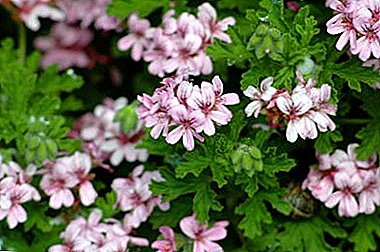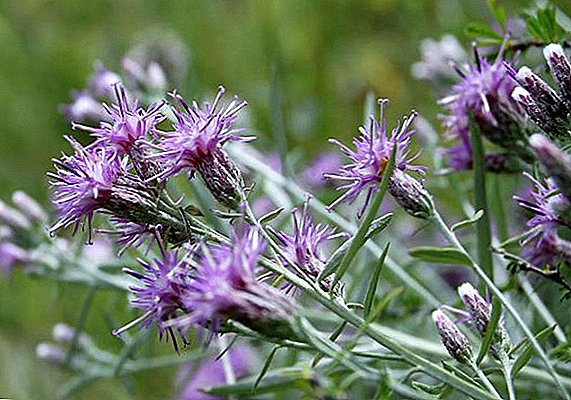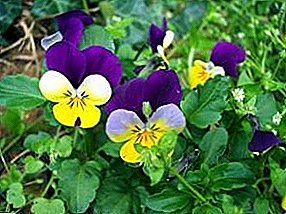
Eggplant is a southern plant that is thermophilic and rather capricious.
Its cultivation requires certain knowledge and skills.
However, all these difficulties are worth it, because in this culture contains a huge amount of vitamins!
Calendar planting eggplant seedlings
 To understand when to start sowing eggplants on seedlings, you need to decide where you are going to grow them - in a greenhouse or in open ground. Another important factor is the region of residence.
To understand when to start sowing eggplants on seedlings, you need to decide where you are going to grow them - in a greenhouse or in open ground. Another important factor is the region of residence.
In the southern terrain, it is recommended to begin sowing the "blue", as many call them, already in February. The colder the area, the later you can begin planting - in March, or even in April.
First, it is necessary to determine the date of the landing of our "little blue" in the ground. From this date we count 55-60 days - we get the days in which you should already have sprouts. Now we subtract two more weeks - the approximate time of seed germination, and we get the days in which it is time to start sowing eggplants. If you are in a hot climate zone, or plan to grow blue ones in a greenhouse, they should be planted in early or mid-May, therefore, sown in February. The numbers are selected, according to the lunar calendar. The most favorable days for sowing eggplants February are 12, 14, 23 and 28.
If you live in central Russia, then the best time for planting eggplants for seedlings is March, and planting in the greenhouse should occur in early or mid-June. In this case, it is necessary to choose early-ripening varieties so that the “blue ones” can ripen before the end of the summer. The most favorable days in March on the lunar calendar are March 3, 4, 12, 14, 16, 20, 25, 30 and 31.
It so happens that the "blue" poorly ascended after the first sowing, in which case it is required to sow them again. The first decade of April is best suited for this. If sowing is carried out later, then eggplants may not have time to ripen. For April, suitable only early-maturing varieties. Planted in the ground such seedlings can be at the end of June. According to the lunar calendar, the most favorable days April is 9, 18, 22, 26, 27, 28.
Seed preparation
 After the date is selected, preparing seeds for planting. The seeds of this type of nightshade sprout very slowly and tightly. Therefore, before sowing them, you should definitely prepare them.
After the date is selected, preparing seeds for planting. The seeds of this type of nightshade sprout very slowly and tightly. Therefore, before sowing them, you should definitely prepare them.
There are several ways to germinate and disinfect.
- Seeds nAdo placed in the temperature of 50-52 degrees Celsius for 25 minutes, then immediately immerse in cold water for 3 minutes. So all diseases are destroyed from the seeds. After this, the seeds should be soaked and held in a 0.01% sodium humate solution for 24 hours. After this procedure, you can germinate seeds.
- Seeds are placed in the solution of potassium permanganate and maintain them for 20 minutes. Next, wash them. This method also kills bacteria. Then the seeds are soaked in Épinay (4 drops per glass of water) at 24-28 degrees Celsius for 17-19 hours. We sprout.
Read more about seed preparation before sowing.
Sprouting is performed in the following ways:
- Seeds need to be put on a saucer and wrap in a damp cloth, and then in polyethylene. Leave in this form for 3-4 days at a temperature of 26-28 degrees. Avoid contact with heating devices.
- Another method, accelerating the germination of grains, is the use of such special tools as "Ideal", "Novosil", "Baikal EM1".
- "Popular" techniques also contribute to rapid germination. - soaking in a mixture of water with ash or manure, as well as in aloe juice.
Soil for "blue" you can buy, or do it yourself. This will require garden land, river sand and peat.
IMPORTANT! For these plants there is a special rule - one third of the whole soil should be land, another third - river sand. The remaining third includes the remaining components - peat, sawdust, lime, chalk, fertilizer.
To sanitize the resulting soil, It is recommended to warm it at a temperature of +60or pour it with a weak solution of potassium permanganate diluted with hot water.
It is necessary to sow these plants immediately in separate cups., as a subsequent dive can be very dangerous for them.
How to sow:
- Prepared land it is required to water plentifully in 1 day before sowing.
- In glasses for saplings we make indentations on 2 cm. Between adjacent holes, a distance of at least 6 cm.
- We sow grain in prepared pits and sprinkle with earth.
- Cover the filled containers with glass or film. at a temperature of 20 to 25 degrees.
- After the emergence of sprouts need to remove coverage and increase the amount of light.
Care rules
 Eggplants are southern plants, whimsical to temperature. Therefore, after the appearance of seedlings, it is necessary to increase the amount of light, but to reduce the daily degrees (to + 18). Then the roots will grow stronger.
Eggplants are southern plants, whimsical to temperature. Therefore, after the appearance of seedlings, it is necessary to increase the amount of light, but to reduce the daily degrees (to + 18). Then the roots will grow stronger.
Water them too should be careful. Before the appearance of the first sheet requires 1-2 watering. After the appearance of the second leaflet increases the number of irrigations up to 2-3 times. But in no case can eggplant be poured - it is fraught with some diseases.
As for additional artificial lighting, it can be switched on no more than 10 hours a day. Be sure to maintain high humidity indoors, use humidifiers, or place containers with water near the battery.
Before planting seedlings for a week and a half, experienced gardeners are advised to start hardening it. To do this, you can take it to the insulated loggia or veranda. Another way is to place cups of seedlings in a greenhouse. At night, additionally cover them with film or acrylic in two layers.
When the seedlings are quite strong stems, at least 6 leaves and a height of at least 20 cm, you can plant them in the ground. Earth, in doing so, should warm up to 15 degrees. It is recommended to plant out eggplants not on the hottest day, but rather in the late afternoon, so seedlings will root better. In the morning, it is desirable to shelter them from direct sunlight. The wells must be made 15-20 cm deep. Before disembarking, pour water over the wells and feed them with fertilizers, well suited mullein solution. Plant this crop in two rows, the distance between the rows of about 50 cm. Seedlings in the same row should be placed at a distance of 40-45 cm from each other. The land between the rows is covered with black film to maintain the required amount of moisture.
Useful materials
Read other articles about growing and caring for eggplant seedlings:
- Different methods of cultivation: in peat tablets, in a snail and even on toilet paper.
- All features of sowing according to the lunar calendar.
- Golden rules for growing from seed.
- Features of cultivation in different regions of Russia: in the Urals, in Siberia and the Moscow region.
- How to transplant seedlings in open ground?
Growing blue ones is a bit more complicated and troublesome than other solanaceous crops. But if you follow all the rules and recommendations described above, you will get a wonderful harvest of eggplants, wherever you are.












